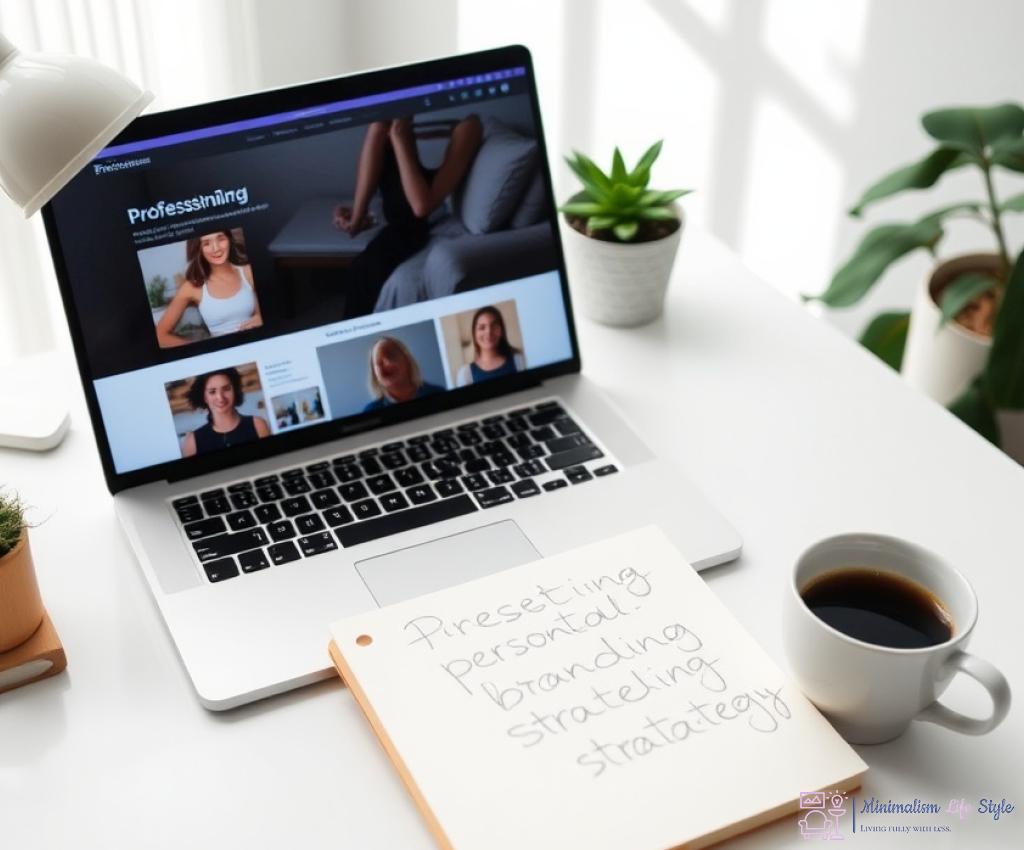Crafting a Clear Personal Brand

In today’s fast-paced professional world, a strong personal brand is more than just a buzzword—it’s a necessity. Your personal brand is a reflection of who you are, what you stand for, and how you want to be perceived in your industry. It’s crucial to clarify your identity to establish credibility and trust with your audience. A well-crafted personal brand can set you apart from the competition and open doors to new opportunities.
Building a personal brand requires a strategic approach. Here are some essential components to consider:
- Authenticity: Be true to yourself and align your brand with your values.
- Clarity: Communicate your message clearly to your audience.
- Consistency: Ensure that your online presence reflects your personal brand consistently across all platforms.
- Visibility: Actively engage in your field to raise awareness of your brand.
Your brand narrative is the story that encapsulates your journey, expertise, and aspirations. It should engage your audience and resonate with their values. To create a compelling narrative, consider the following steps:
- Define Your Values: What principles guide your professional life?
- Identify Your Expertise: What skills or knowledge do you possess that can benefit others?
- Connect with Your Audience: Who are you trying to reach, and what do they care about?
- Share Your Story: Use various platforms to articulate your journey and insights.
As you refine your personal brand, remember that it is an ongoing process. Be open to feedback, and don’t hesitate to adapt as you grow in your career.
Leveraging Minimalism in Communication
In an era where information overload is the norm, effective communication is more crucial than ever. Adopting a minimalist approach not only streamlines your messaging but also enhances your professional credibility. By focusing on clarity and brevity, you can ensure that your ideas resonate more deeply with your audience, fostering stronger connections and trust.
Minimalism in communication encourages you to distill your thoughts to their essence. Rather than overwhelming your audience with excessive details, aim to present your ideas in a manner that is both engaging and straightforward. This approach not only facilitates understanding but also positions you as a confident and credible communicator.
When communicating your ideas, consider the power of words. Each word should serve a purpose, contributing to the overall message. By eliminating jargon and filler phrases, you invite your audience to focus on the core of your argument. For instance, instead of saying, “I think it might be beneficial if we could perhaps consider the possibility of…” you can say, “Let’s consider…” This shift not only makes your statement stronger but also portrays you as decisive and informed.
Moreover, employing a structured format in your communication can significantly enhance clarity. Utilize bullet points or concise paragraphs to break down complex information. Visual aids can also complement your message, making it more digestible. The key is to maintain a balance between informative content and simplicity, ensuring your audience walks away with a clear understanding of your points.
Engagement is at the heart of effective communication. Minimalism allows you to create impactful interactions by focusing on quality over quantity. In conversations, prioritize active listening and thoughtful responses over the urge to fill silences with unnecessary chatter. This not only demonstrates respect for your audience but also enhances your credibility as someone who values genuine dialogue.
In professional settings, consider the importance of non-verbal communication as well. Your body language, eye contact, and tone should align with your minimalist approach, reinforcing the messages you convey. A calm demeanor paired with clear articulation can significantly boost your professional presence, making others more likely to trust and respect your insights.
| Minimalism in Communication | Traditional Communication |
|---|---|
| Clear and concise | Often verbose with unnecessary details |
| Engages audience effectively | May lead to disengagement |
| Encourages active listening | Can foster passive reception |
Building Trust Through Consistency
In the realm of professional credibility, consistency is not just a virtue; it is a cornerstone. An unwavering commitment to consistent messaging, behavior, and values fosters an environment of trust. When your audience knows what to expect from you, their confidence in your capabilities and character strengthens. This trust can be a powerful catalyst for career advancement and networking opportunities, creating a ripple effect that enhances your professional standing.
Creating a credible personal brand demands a reliable presence across various platforms. This reliability encompasses both your online and offline interactions. Whether you’re engaging on social media, delivering presentations, or networking at events, your message should remain steady and aligned with your core values.
Key Actions for Establishing Reliability:
- Align Your Messaging: Ensure that your communication reflects your true self and professional ethos across all platforms.
- Regular Engagement: Consistently contribute to discussions in your field to reinforce your expertise and commitment.
- Follow Through: Commit to your promises and deliver on your word, as this will solidify your reputation as dependable.
Engagement is essential, but how you engage matters just as much. Predictability in your interactions leads to comfort and reassurance for your audience. When they know how you will respond in various situations, they are more likely to view you as a trustworthy professional.
To enhance predictability, consider the following:
- Consistent Tone and Style: Maintain a coherent tone in your writing, speaking, and digital presence to promote familiarity.
- Establish Clear Boundaries: Set and communicate your availability and response times to manage expectations effectively.
- Be Transparent: Share insights into your decision-making process, showcasing your integrity and openness.
By focusing on these aspects, you not only build trust but also create a supportive professional ecosystem where collaboration and mutual respect can thrive.
The Art of Saying No: Prioritizing Value
In a world where opportunities often seem boundless, the ability to say no becomes a crucial skill for maintaining professional credibility. Embracing a minimalist approach allows you to focus on what truly matters and reject distractions that do not align with your core values and objectives. By prioritizing value over volume, you cultivate an environment where your time and energy are dedicated to pursuits that enhance your professional standing.
Setting boundaries is not merely about declining invitations or requests; it is about understanding your limits and aligning your commitments with your personal and professional goals. When you clearly define what is acceptable and what is not, you empower yourself to make decisions that resonate with your aspirations. This clarity not only enables you to say no effectively but also communicates to your peers that you are serious about your priorities.
The way you express your decision to decline can significantly impact how it is received. A minimalist approach emphasizes the importance of clear and concise communication. Instead of offering lengthy justifications, you can say, “Thank you for the opportunity, but I must decline to focus on my current commitments.” This not only shows respect for the other party but also reinforces your commitment to your existing responsibilities. Remember, saying no is not a rejection of others; it is a commitment to your own path.
By choosing your engagements carefully, you enhance your credibility in the eyes of your colleagues and clients. When people see that you prioritize valuable opportunities, they are more likely to respect your decisions and view you as a professional who is in control of their career trajectory. This selectivity fosters trust, as your audience understands that your participation is not a matter of chance but a deliberate choice that reflects your commitment to quality.
Networking with Purpose: Quality Over Quantity
In the realm of professional growth, networking has long been touted as a game-changer. However, in a world inundated with events, connections, and digital platforms, the question arises: how can you ensure that your networking efforts contribute meaningfully to your credibility? Embracing a minimalist approach to networking allows you to discard the superfluous and hone in on the relationships that truly matter.
To cultivate a robust professional network, it’s imperative to approach your networking endeavors with intention. Rather than casting a wide net, focus on forging authentic connections with individuals who resonate with your values and aspirations. This strategy not only enhances the quality of your relationships but also amplifies your credibility within your industry.
When evaluating your networking strategy, consider the following key aspects that distinguish quality connections from mere contacts:
| Quality Connections | Quantity Connections |
|---|---|
| Deep, meaningful interactions | Surface-level exchanges |
| Shared values and goals | Diverse interests with little commonality |
| Long-term relationship potential | Short-lived engagements |
| Mutual support and collaboration | One-sided interactions |
By prioritizing quality connections, you position yourself as a credible and reliable professional who is invested in the success of others.
Embracing a minimalist mindset in your networking efforts can streamline your approach and lead to more significant outcomes. Here are some actionable strategies to consider:
- Identify Your Networking Goals: Clearly define what you hope to achieve through networking, whether it’s finding a mentor, exploring job opportunities, or seeking collaboration.
- Engage Meaningfully: Reach out to individuals with personalized messages that reflect your genuine interest in their work and insights.
- Follow Up Thoughtfully: After initial interactions, maintain the relationship by checking in periodically, sharing relevant resources, or offering assistance.
By focusing on these strategies, you not only enhance the quality of your connections but also reinforce your professional credibility in a meaningful way.




